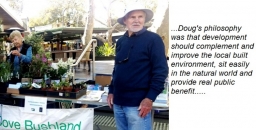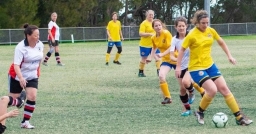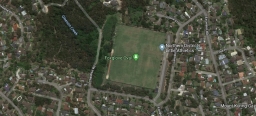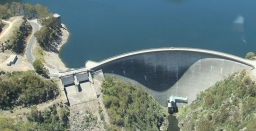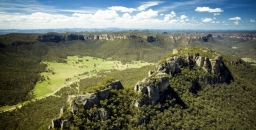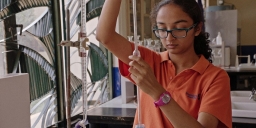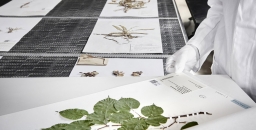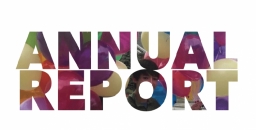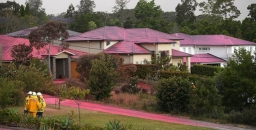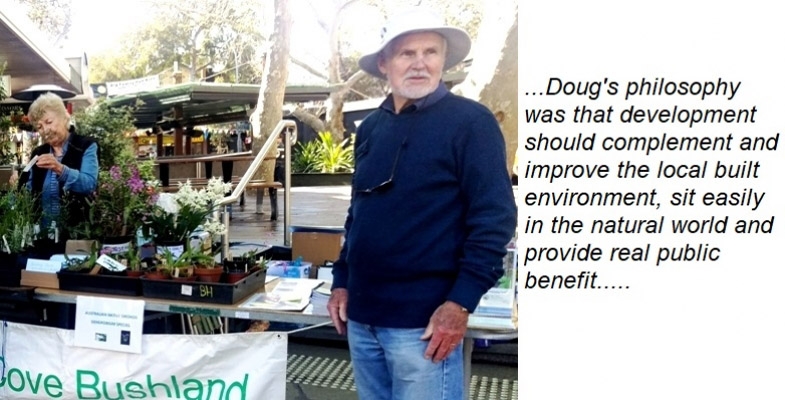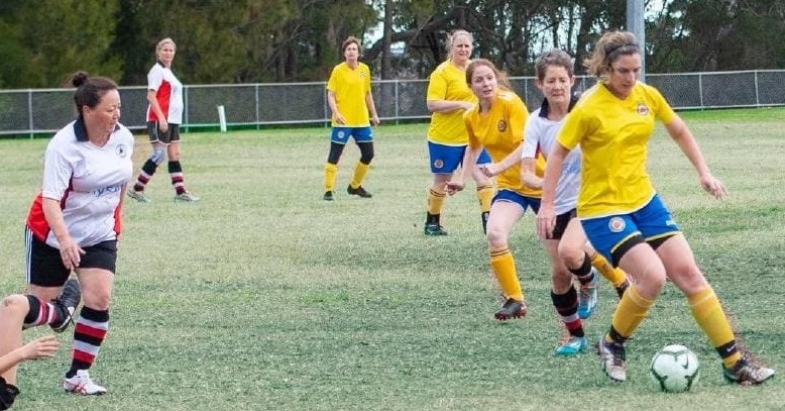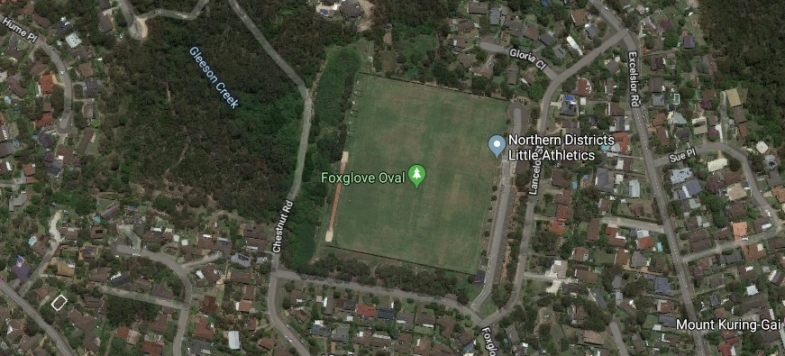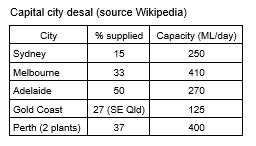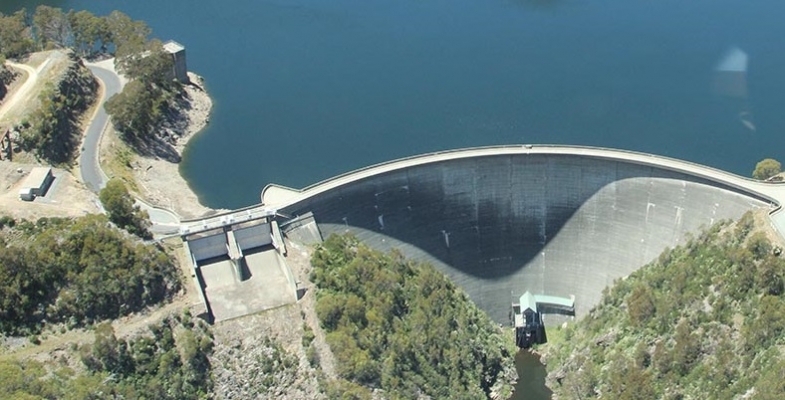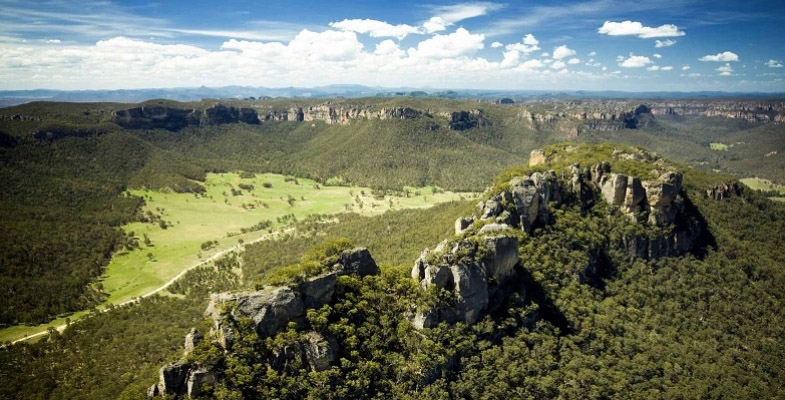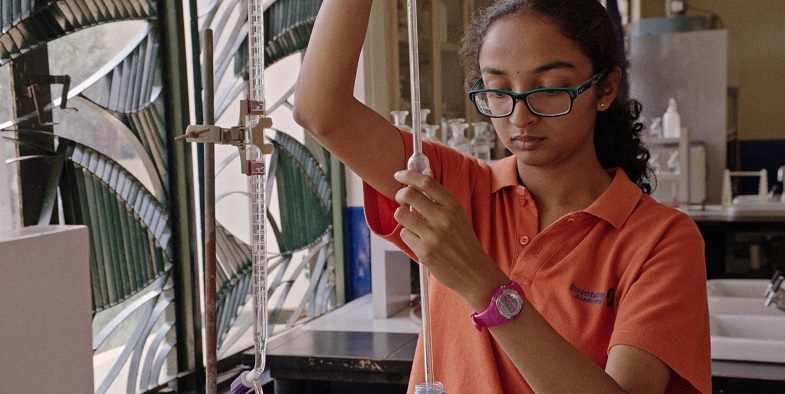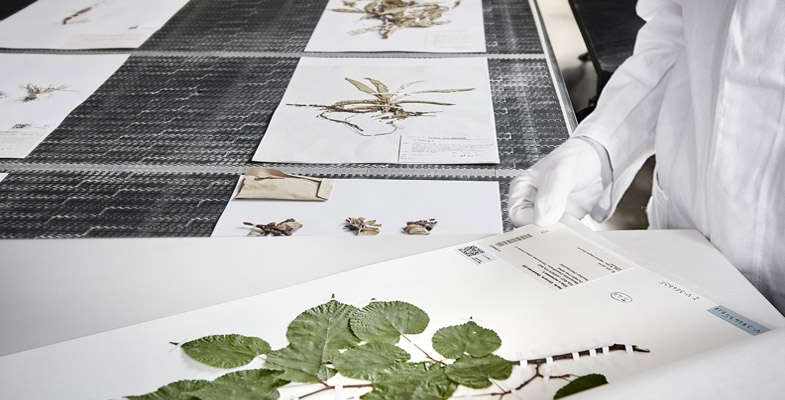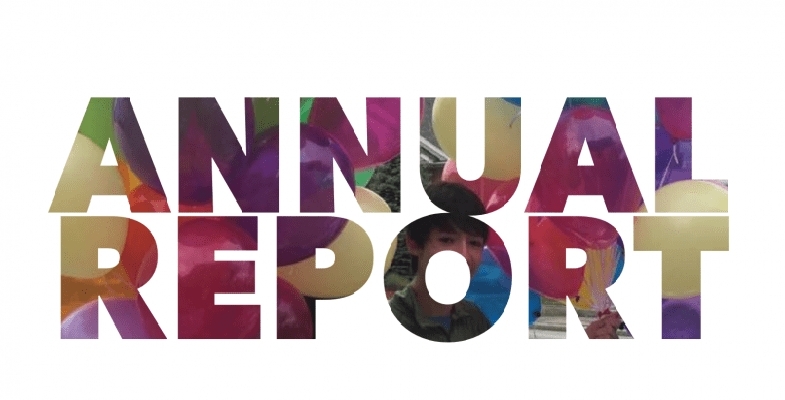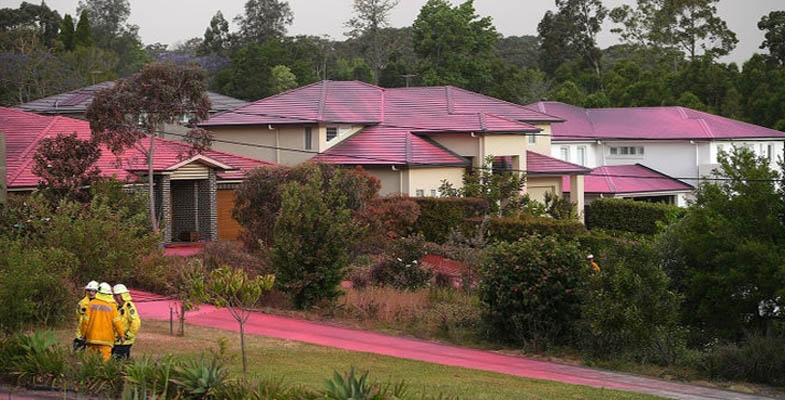STEP Matters 203
- Default
- Title
- Date
- Random
- Members of the Lane Cove Bushland and Conservation Society and the Lane Cove community have been saddened by the death…Read More
- Ku-ring-gai Council is soon to decide whether to install synthetic turf at Mimosa Oval in Turramurra. Click here for our…Read More
- In the last issue of STEP Matters we reported good news that, in April 2019, the Land and Environment Court…Read More
- There is a parcel of land at the end of Chestnut Road, Mt Colah that has been privately owned for…Read More
- As this is being written in late-August, Sydney is enjoying another near cloudless day. There’s been no rain for weeks…Read More
- The article explains that the Snowy 2.0 project will be a financial disaster and that the project will also cause…Read More
- Lithgow coal miners want job security. Environmentalists want protection for the Gardens of Stone region’s upland swamps, endangered wildlife and…Read More
- National park land At the Nature Conservation Council annual conference Environment and Energy Minister Matt Kean was positive in his…Read More
- In this time when science is our main hope for combating climate change, it was so uplifting to attend the…Read More
- From January 2019 the National Herbarium of NSW has been closed while its collection of plant specimens is relocated from…Read More
- The NSW and federal elections in 2019 had the unfortunate result of leaving us with business as usual. No policy…Read More
- You may be wondering what happened on 12 November, the evening of STEP’s AGM. Owing to temperatures in the 30s,…Read More
Vale Doug Stuart
Members of the Lane Cove Bushland and Conservation Society and the Lane Cove community have been saddened by the death in September of Doug Stuart. Doug was a tireless advocate for the natural and built environment of Lane Cove and further afield. His first venture into bushland protection was prompted by news in 1970 that the local golf course wanted to double its size by annexing bushland, some of it at the bottom of his garden. Community anger at the potential harm to local flora and fauna prompted a public meeting and the foundation of the Lane Cove Bushland and Conservation Society in March 1971. Stuart was a founding executive member and, with his wife Norma, has been a driving force behind the society serving as president (10 years) and secretary (12 years).
In the summer of 1971 to 72, Stuart organised a large team of volunteers to survey the state of all Lane Cove’s bushland to identify sites suitable for regeneration. He drew maps of each site and collated ownership details. He gave the document to council who responded to the call to maintain and protect it. In 1998, he helped found RASAD, a community group advocating for appropriate development in the Lane Cove village. Doug’s profession as an architect enabled close analysis of development proposals.
His philosophy was that development should complement and improve the local built environment, sit easily in the natural world and provide real public benefit. RASAD spoke out against a series of inappropriate proposals, demanded change in others and refused to accept developers’ proposals that would have turned Lane Cove’s art deco village into concrete and steel.
Turramurra Turf Battle
Ku-ring-gai Council is soon to decide whether to install synthetic turf at Mimosa Oval in Turramurra.
Click here for our submission to council and here for our report on Mimosa Oval's geological and physical setting and flora.
STEP is opposed to the use of synthetic turf for a number of environmental reasons. These are accentuated by the location of Mimosa Park being surrounded by bushland, most of which is a biobanking site. These reasons include:
- During heavy rain additional water run-off is generated because the synthetic surface does not absorb water.
- Chemicals may leach from the synthetic turf and the breakdown of the plastics and rubber may pollute surrounding areas.
- Natural grass acts as a carbon sink but requires mowing and fertilizer use. On the other hand, synthetic turf is made from petrochemical materials, so the manufacturing process involves energy use.
- Synthetic turf requires ongoing cleaning and has a limited life so will need to be disposed of and replaced after 8 to 10 years depending on the level of use.
- Synthetic turf has a significantly higher surface temperature than natural grass making it impossible to use the field in hot weather, even only as high as 30°C.
- The synthetic turf surface will lead to compaction of the soil underneath and the loss of the microorganisms and insects that normally live in grassed areas.
- Natural grass fields provide a food source for birds such as magpies, lapwings and cockatoos. The reduction in foraging areas for these birds will have impacts further up the food chain. Top predators, such as the Powerful Owl, will lose a foraging opportunity.
Apart from the environmental issues the installation of synthetic turf at Mimosa is being opposed strongly by the local community that will lose use of the oval as a general recreation area. Its current use for cricket will not be possible. Kissing Point Cricket Club will have to find another venue for its matches. If natural grass is maintained soccer can still be played in the winter as well as cricket.
Mimosa Oval is part of Rofe Park that was gifted by the Rofe family:
Upon trust for the public as a public park and reserve for the preservation of natural fauna and flora.
The proposed use solely as a soccer field will mean it will no longer be a public park.
Council originally considered installing synthetic turf at Norman Griffiths Oval. From the soccer club’s point of view this has the major advantage that the field would be right next to their clubhouse. It appears that Norman Griffiths will still be used for soccer matches as there is a shortage of suitable fields.
Norman Griffiths Oval was rejected on the grounds of difficulty and expense of the works needed to control heavy rain run-off. The Mimosa plan will save about $1 million. Council now proposes to use the money saved to upgrade Norman Griffiths as well as installing the synthetic turf at Mimosa. It is not clear if the upgrade plan includes the installation of better fencing around the Norman Griffiths Oval to prevent people shimmying down the slopes around the oval. This work is essential in any case because these areas contain a special range of plants including orchids.
To cater for the cricketers who used to play at Mimosa Oval, council is proposing to install a concrete cricket pitch at Norman Griffiths. It is not clear what effect this will have on its use as a soccer field.
Bayview Golf Course Development – They’re Trying Again!
In the last issue of STEP Matters we reported good news that, in April 2019, the Land and Environment Court had upheld a decision by Northern Beaches Council and the North Planning Panel to refuse a seniors housing development on Bayview Golf Course. Unfortunately the Golf Club in association with developer Waterbrook has now re-submitted plans to the Department of Planning, Industry and Environment for a similar development consisting of seven large buildings, with three storey apartments over 5 acres of historical open space land.
The Golf Club wants to clear the last remaining area of remnant forest left on the golf course. This will further impact significantly the already fragile ecosystem within this important wildlife corridor that is home to nine threatened fauna species. It is habitat to a family of Powerful Owls and their creek line roosting area is very close to the development site. They also want to raise the level of the flood affected portion of their land, which is a designated wetland area for many bird species.
The community is concerned that if this application is approved it will create a significant precedent for Bayview and the whole of the Northern Beaches area. If seniors three storey apartments can be built in the middle of a high priority wildlife corridor, and that is not considered 'environmentally sensitive', nor worthy of protection, then we can expect similar large-scale seniors living complexes to be built on any wildlife habitat or ecologically sensitive land across the Northern Beaches.
Click here to sign a petition organised by the Bayview residents community group and here for more information.
Berowra Valley National Park – Some Good News
There is a parcel of land at the end of Chestnut Road, Mt Colah that has been privately owned for years. It is just below a playing field that was built on a former landfill site. Pollutants have been leaching out of the tip into the creek below. Nevertheless, the land has some high quality bushland and borders on Berowra Valley National Park.
The landowner submitted a subdivision plan for the land that would have created 49 housing lots on the 4.4 ha sloping site. The process has been ongoing since 2017 as Hornsby Council has requested further documentation and an EPA investigation was required of gas from the former landfill site.
Hornsby Council recommended refusal mainly on the grounds that most trees would be cleared, and major landform modifications would be required. Over 100 objections have been submitted by local residents on the grounds of site contamination, overdevelopment, traffic, parking and safety impacts, tree loss, flora and fauna impacts, acoustic impacts and unacceptable impacts on the catchment of the Berowra Valley National Park.
In October the DA went before the Local Planning Panel. It is a great relief that the Panel unanimously decided on rejection because the proposal did not comply with many principles of the urban bushland policies and the Hornsby Development Control Plan.
What happens next is not clear. Could some or all of the land be added to Berowra Valley National Park?
Water Desalination
As this is being written in late-August, Sydney is enjoying another near cloudless day. There’s been no rain for weeks and none is forecast. Rainfall at the observatory has been 3.2 mm for the month so far.
This is not unusual for August. August 2018s total was 7.8 mm; 2017s 24.2 mm. But it can be very variable; 2014s was 215 mm. Sydney’s record daily rainfall was on 6 August 1986 – 328 mm with a total of 448 mm with the inclusion of the day before and the day after.
It has been dry and the dams are about 50% full and falling rapidly. As a result the desal plant at Kurnell is in operation to provide about 15% of Sydney’s water. Consequently our water bills are being increased from $2.11 to $2.24 per kL on 1 October.
Desal means desalination; i.e. the process of converting sea (saline) water to drinking water by the removal of salt. This is done by a process of filtration (reverse osmosis) but requires the water to be subject to massive pressure. It is very expensive in terms of energy consumption.
Brisbane (Gold Coast), Sydney, Melbourne and Adelaide all got their desal plants as a result of the millennial drought in the early years of this century. They are only operated fully in drought periods – but see our update on Adelaide.
The Melbourne operation is quite marginal as the plant is located near Wonthaggi south-east of Melbourne not far from Phillip Island. It was impossible to locate it on Port Phillip Bay as water circulation in the bay is too low. So an 85 km pipeline had to be built as well and this of course gives rise to extra energy for pumping.
What about Perth you ask? This is the standout situation as this city depends on desal for about 40% of its supply year on year. Only about 10% comes from the dams in the Darling Ranges near Perth as most of this water is piped to the Eastern Goldfields (Kalgoorlie). One suspects that much of it is used by the gold mines.
The remainder is supplied by groundwater and recycling. The groundwater in future might become saline in which case it will be subject to desal too. This is also an issue in outback NSW.
The environmental impact of desal in Perth is somewhat mitigated by the use of natural gas to generate electricity.
Do Perth residents pay more than Sydney residents given that their water costs more to provide? The answer appears to be yes but it is not as simple as it might be. Perth has a sliding scale of charges. Like Sydney there is quarterly billing but the Perth charge depends on one’s annual consumption and can cost up to $4.442 per kL.
Sydney Water claims that its desal power is provided in an environmentally friendly way in that they have a contract with the 67 turbine Capital Hill Wind Farm, near Canberra.
This is a furphy. When the desal plant isn’t operating the wind farm feeds the NSW power grid. So when it is operating this feed is reduced and we have more reliance on gas and coal so increasing greenhouse gas emissions over what they otherwise would be.
A contrary view might be reasonable if we knew the pricing/contractual arrangements between Sydney Water and Infigen Energy, the owner of the Capital Hill Wind Farm. It may be that the farm would not have been developed without the desal requirement or not developed to the same extent.
CityLab article
Here are some excerpts from an article entitled A Water-stressed World Turns to Desalination.
The first large-scale desal plants were built in the 1960s, and there are now some 20,000 facilities globally that turn sea water into fresh. The kingdom of Saudi Arabia, with very little fresh water and cheap energy costs for the fossil fuels it uses in its desal plants, produces the most fresh water of any nation, a fifth of the world’s total.
Israel, too, is all in on desalination. It has five large plants in operation and plans for five more. Chronic water shortages there are now a thing of the past, as more than half of the country’s domestic needs are met with water from the Mediterranean.
Ecological impacts: It takes two gallons of sea water to make a gallon of fresh water, which means the gallon left behind is briny. It is disposed of by returning it to the ocean and - if not done properly by diffusing it over large areas – can deplete the ocean of oxygen and have negative impacts on sea life.
Another problem comes from the sucking in of sea water for processing. When a fish or other large organism gets stuck on the intake screen, it dies or is injured; in addition, fish larvae, eggs, and plankton get sucked into the system and are killed.
Contributed by Jim Wells
Update on Adelaide – November 2019
In another example of policy on the run like Snowy 2.0, PM Scott Morrison announced a drought relief package in early November. This includes a deal to crank up Adelaide’s desal plant in order to provide water for farmers to grow fodder for livestock.
Lin Crase, Professor of Economics and Head of School, University of South Australia in an article in The Conversation points out that this is not such a brilliant idea.
The plan involves the federal government paying the South Australian government up to $100 million to produce more water for Adelaide using the little-used desalination plant. Adelaide has continued to mostly draw water from local reservoirs and the River Murray, which on average has supplied about half the city’s water (sometimes much more).
But with federal funding, the desal plant will be turned on full bore. This will free up 100 GL of water from the Murray River allocated to Adelaide for use by farmers upstream in the Murray Darling’s southern basin.
The federal government expects the water to be used to grow an extra 120,000 tonne of fodder for livestock. The water will be sold to farmers at a discount rate of $100 per ML. That’s 10 cents per 1,000 litre.
The production cost of desalinated water is about 95 cents per 1,000 litres, according to a cost-benefit study published by the SA Department of Environment and Water in 2016. That means the total cost for the 100 GL will be about $95 million. So the federal government is effectively paying $95 million to sell water for $10 million: a loss to taxpayers of $85 million.
The discounted water provided to individual farmers will be capped at no more than 25 ML. The farmers must agree to not sell the water to others and to use it to grow fodder for livestock.
The amount of hay that can be grown with 1 ML of irrigation water depends on many things, but 120,000 tonne with 100 GL is possible in the right conditions. In the Murray-Darling southern basin lucerne hay currently sells for $450 to $600 a tonne. That would make the market value of 120,000 tonne of lucerne $54 to $72 million.
It means, on a best-case scenario, the federal government will be spending $85 million to subsidise the production of hay worth $72 million to its producers. One question is how will the government distinguish between the fodder grown with the megalitres provided at low cost and any other fodder harvested on the same farm that has been grown from rainfall or other irrigation water? How much will it cost to monitor and enforce such arrangements?
It seems a long way from the type of national drought policy Australia needs. It’s hard to see how a policy of this kind does anything other than waste a large amount of public money and disrupt important market mechanisms in agriculture in the process.
Contributed by Jill Green
We must Hit the Pause Button on Snowy 2.0
The article explains that the Snowy 2.0 project will be a financial disaster and that the project will also cause huge environmental damage. The National Parks Association has published a damning report on the project.
The federal government’s much-vaunted Snowy Hydro expansion is supposed to smooth out the bumps in electricity supply as Australia transitions to renewables. But not only is the project a bad deal for taxpayers, our analysis suggests it will deliver a fraction of the energy benefits promised.
Fossil-fuel power generators store coal or gas at the point of production. This means electricity can mostly be created on demand when homes and businesses need it. Renewable energy cannot do this. If wind or sun is not abundant, solar panels and wind turbines may not produce enough electricity to meet demand. At other times they might produce more than required.
The Snowy 2.0 project is supposed to provide a solution to this problem - storing renewable energy for when it is needed.
The project’s cost and time estimates have blown out massively. It would now be surprising if Snowy 2.0, including the transmission upgrades it relies on, comes in at less than A$10 billion or is finished before 2027.
But there is another serious problem. Our analysis has revealed that of the extra pumped hydro capacity promised by the project, less than half can be delivered. There is now overwhelming evidence the project should be put on hold.
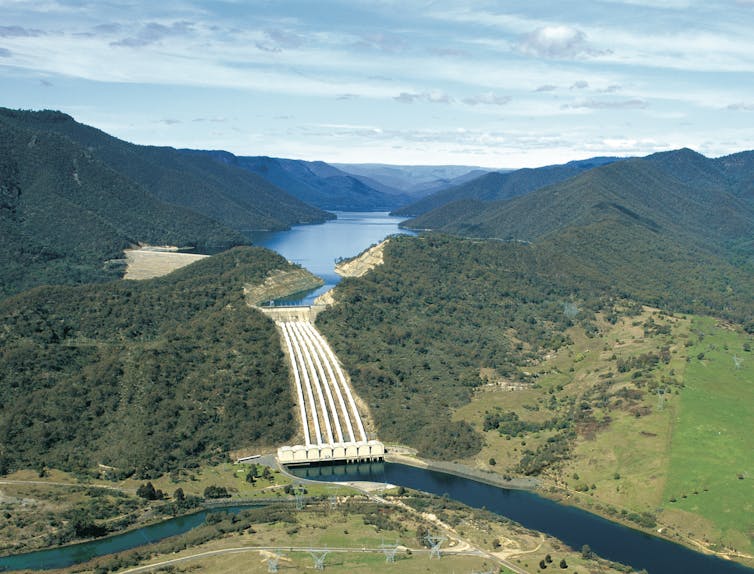
The problems we know about: cost and time blowouts
The list of possible alternatives to Snowy 2.0 is long. Aside from other pumped hydro projects, it includes chemical batteries, encouraging demand to follow supply, gas or diesel generators, and re-orienting renewable generators to capture the wind or sun when it is less plentiful.
But despite this plethora of options, the federal government announced the Snowy 2.0 project without a market assessment, cost-benefit analysis or indeed even a feasibility study.
Read more: The government's electricity shortlist rightly features pumped hydro (and wrongly includes coal)
When former Prime Minister Malcolm Turnbull announced the expansion project in March 2017 he said it would cost A$2 billion and be commissioned by 2021. This was revised upwards several times and in April this year, a A$5.1 billion contract for partial construction was awarded. This excludes the costs of transmission and other considerable expenses.
The main contractor says the project will take eight years to build - bringing us to 2027 before the full scheme is completed. We will happily wager that more delays and cost increases will be announced.
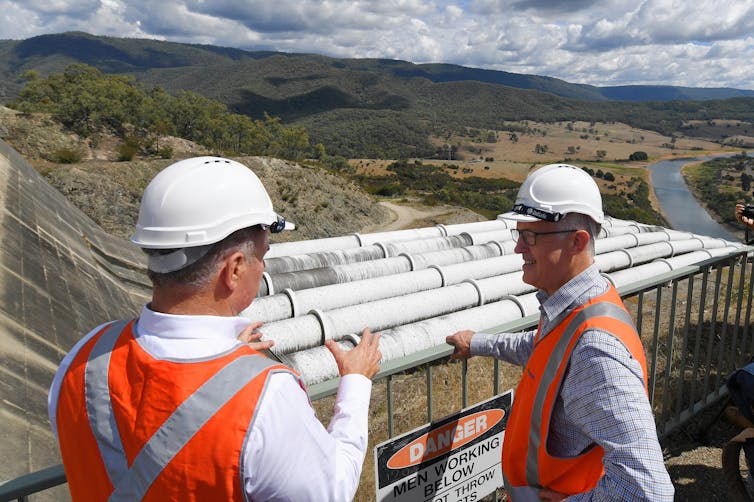
Snowy Hydro has not costed the transmission upgrades upon which the project depends. TransGrid, owner of the grid in New South Wales, has identified options including extensions to Sydney with indicative costs up to A$1.9 billion. Massive extensions south to Melbourne will also be required.
Snowy Hydro contends it should not pay for the new transmission lines because the benefits would flow to the entire grid, not just its venture. In other words Snowy Hydro argues, conveniently, that we should count the benefits but ignore the costs when thinking about their project.
The numbers simply do not add up
The Snowy 2.0 project grandly claims it could generate at its full 2,000 megawatt capacity for 175 hours - or about a week. This capacity can also be expressed as 350 gigawatt hours (GWh).
Energy Minister Angus Taylor has talked up the project’s superiority to smaller-capacity alternatives such as batteries.
But the maximum additional pumped hydro capacity Snowy 2.0 can create, in theory, is less than half this. The reasons are technical, but worth taking the time to understand.
The figure below outlines the main physical features that define Snowy 2.0. It includes four dams: Tantangara, Talbingo, Jounama and Blowering. For simplicity, we have numbered these from 1-4 in the following explanation.
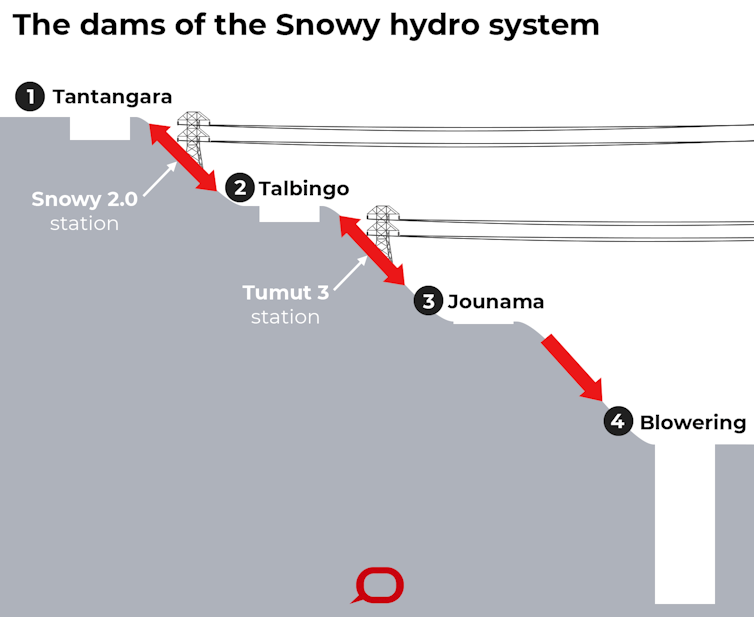
When Snowy 2.0 generates electricity, water will be released from Dam 1 at the top of the system. It will flow through a long tunnel to the smaller Dam 2. The flow of water drives turbines which generate energy. When the turbines are reversed, the water is pumped back to the top to continue the cycle.
For Snowy 2.0 to produce the 350 GWh of electricity claimed, the top dam must be full and all that water released through the system. But replenishing the top dam after this event would take many months of pumping water from elsewhere in the system, and use up 40% more electricity than was originally generated. So the 350 GWh would never be achieved because it is extremely inefficient and inflexible.
In reality, the pumped hydro capacity of Snowy 2.0 is defined by the amount of water that the smaller Dam 2 can hold. If the scheme was a closed system, with no other water flowing in or out, it could produce around 230 gigawatt hours (GWh) of electricity.
But the system does not exist in isolation. Part of the existing Snowy Hydro scheme, known as Tumut 3, also uses Dam 2. It creates pumped hydro electricity by cycling water between that dam and the even smaller Dam 3 below it.
For Snowy 2.0 to operate at full cyclical capacity, Dam 2 must be empty to receive the water. That would entail emptying Dam 2 into the smaller Dam 3 and from there to Dam 4 at the bottom of the system. This water could not be used again to generate electricity. This “lost” water would have generated 60 GWh worth of electricity in the Tumut 3 scheme.
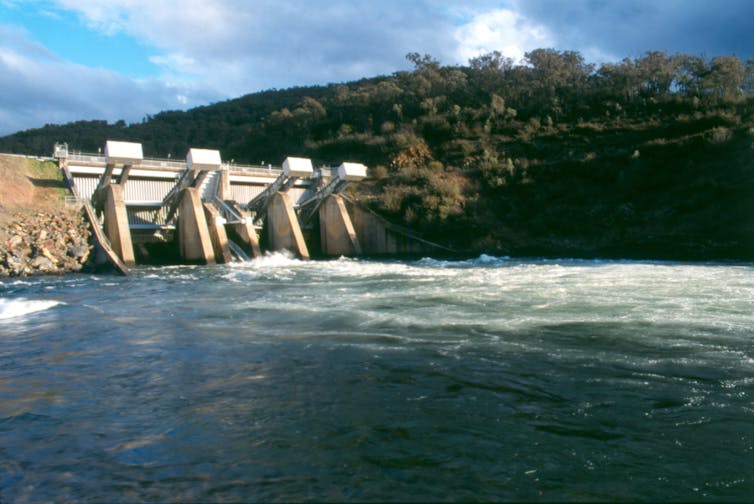
This means that as a cyclical pumped hydro system, Snowy 2.0 does not add 230 GWh of capacity. When you subtract the 60 GWh from the 230 GWh, Snowy 2.0 adds just 170 GWh of recyclable pumped hydro. This is less than half the claimed storage capacity.
And this is the maximum cyclical capacity in theory only. Snowy 2.0 would never produce continuously for the time needed to generate and then pump 230 GWh because it would never be economically viable to run it this way.
In practice if Snowy 2.0’s lower dam is operated in future as it is now – almost always close to full – the cycling capacity of Snowy 2.0 may be as low as 40 GWh – around one tenth of the promised number.
What does all this mean?
These facts put Snowy 2.0 in a completely different light. There are many competing alternatives that can provide storage far more flexibly for a fraction of Snowy 2.0’s price tag. These alternatives would also have far fewer environmental impacts or development risks, in most cases none of the transmission costs and could be built much more quickly.
It is always difficult to press the pause button on a major project once it has begun. But the evidence for doing this is overwhelming. In pursuit of the public interest, the federal government should put the project on hold and ask a reputable investment bank to publicly advise, perhaps through the Productivity Commission, what Snowy 2.0 would be worth if built.
A credible independent valuation would establish with some confidence how deeply Snowy Hydro will have its hands in the public’s pockets. A panel of independent experts should then be asked to publicly advise whether taxpayer money is needed to meet the demands of a renewables-dominated power system, and if so, the best way it should be spent.![]()
Bruce Mountain, Director, Victoria Energy Policy Centre, Victoria University
This article is republished from The Conversation under a Creative Commons license. Read the original article.
Destination Pagoda could be a Win for the Environment and the Lithgow Community
Lithgow coal miners want job security. Environmentalists want protection for the Gardens of Stone region’s upland swamps, endangered wildlife and the spectacular but fragile pagoda rock formations. Lithgow needs a boost to its economy. Centennial Coal has to pay millions as an ‘environmental offset’ for damage done to nationally significant and endangered upland swamps. They have identified the preferred swamp management program as reservation of the Gardens of Stone region. This is a no-brainer for a win-win situation.
The Colong Foundation, Blue Mountains Conservation Society and Lithgow Environment Group have launched a plan, called Destination Pagoda that will capitalise on this situation. The plan is to reserve the Gardens of Stone as a State Conservation Area to protect its pagodas and swamps. At the same time this designation will permit appropriate underground coal mining. New facilities will be created in the Lithgow area to develop tourism that will expand opportunities for visitors to experience the rock formations and aboriginal heritage of the area.
The plan will require a modest investment that will establish professional conservation management, improve access roads, develop visitor facilities, restore degraded areas, encourage visitors, support local enterprises and protect important values. The cost can be funded from Centennial Coal’s swamp offset funds of up to $14 million currently; mining company management of some roads and pest species, transfer of state forest expenditures to NPWS and Commonwealth and NSW government funds.
Getting the plan up has required much discussion. The process for getting a dialogue happening was facilitated by visits to Lithgow by unionists from the Combined Retired Union Members Association. Now the need is to get government support.
Events such as a bush dance in Lithgow on Saturday 23 November 2019 are being held to build the momentum of support for the plan.
The story about the campaign and the efforts to save the area are presented in Tom Zubrycki's documentary film called Gardens of Stone – A Living Landscape. The film will be screened on Tuesday 26 November at 6 pm at the Sydney Trades Hall Auditorium, Unions NSW, 4–10 Goulburn Street, Sydney – Gardens of Stone Alliance. For bookings contact Janine Kitson (0428 860 623, This email address is being protected from spambots. You need JavaScript enabled to view it.).
Letters to the local MP for Bathurst, Paul O’Toole will help.
For more details go to www.gardensofstone.org.au.
State Government News
National park land
At the Nature Conservation Council annual conference Environment and Energy Minister Matt Kean was positive in his support for some of the environment objectives of the member groups. We just hope that he can have enough authority in cabinet. He wants to increase the land in national parks by 200,000 ha and has funding to do this. Already 64,000 ha has been added with most of it in north-west NSW near Broken Hill. He recently announced that Radiata Plateau will be purchased for addition to the Blue Mountains National Park. This is a major win for the Blue Mountains Conservation Society that has been lobbying for this addition for years. There has been virtually no declaration of new national park land since 2011 under the previous Liberal environment ministers.
He suggested we approach our local MPs or councils to nominate suitable pieces of land in our local areas to be added to the portfolio of protected lands. He indicated that unprotected land in Byles Creek Valley should be on the list.
Bush fires and climate change action
At the NCC conference Matt Kean stated that he wanted NSW to lead the nation in achieving the goal of zero greenhouse emissions by 2050 and he would be setting interim targets. There was no detail on the policies that would aim to achieve these targets but the time available for his speech was short. The adoption of this policy could be problematic with the current refusal by the Deputy Premier, John Barilaro to talk about climate change while the bushfires are burning. Surely this is the appropriate time.
Coal mine refusals
In a landmark decision in September the Independent Planning Commission (IPC) knocked back an application by Kepco Ltd for a new coal mine in the Bylong Valley. The IPC is the statutory agency responsible for making arm's-length decisions on state-significant development.
The IPC based its refusal on environmental impacts other than climate change, including impacts of the project on strategic agricultural land, groundwater and Aboriginal cultural heritage. However, the IPC found the project's contribution to global greenhouse gas emissions was a factor that needed to be considered in its assessment, and placed weight on Kepco’s failure to propose any offset measures.
The IPC drew its decision on the principles established by the NSW Land and Environment Court in February regarding the assessment of cumulative greenhouse gas impacts in its decision concerning the Rocky Hill project near Gloucester. This project was for a new coking coal mine. The decision must be viewed in context, with the court stating it would have refused this particular mine anyway for other reasons, such as inconsistency with other land uses, amenity impacts (noise, dust), visual intrusion and social impacts of the mine. However the decision did state that the court had regard to, not only the direct emissions of the mining activities, but also the 'scope 3' indirect emissions, being the greenhouse gas emissions associated with third-party burning of the coal (which make up the vast majority of emissions associated with the coal).
Both these decisions have given great heart to people concerned about climate change and wanting to see Australia reducing its reliance on the coal mining industry.
Now we are shocked to learn that the NSW government is undertaking a snap review of the IPC saying that the reason for the review was another decision that didn’t follow due process. Terms of reference for the review, which will be overseen by NSW Productivity Commissioner Peter Achterstraat, include ‘whether it is in the public interest to maintain an Independent Planning Commission’, and whether changes should be made to the thresholds for referring matters to the IPC. The Minerals Council has launched a campaign against the IPC.
If the IPC is scrapped these decisions would be made by the planning minister and transparency would be lost. Submissions are now closed and the Productivity Commission’s report is due by mid-December.
Anti-protest laws
The right to protest is being attacked at the state and federal level.
The NSW government has passed its Right to Farm Bill and it will come into force early 2020, it will almost quadruple the penalty for ‘aggravated unlawful entry on inclosed lands’ from $5,500 to $22,000 and add a three-year prison term for people who merely ‘hinder’ a business while trespassing. The government claims this law is needed to protect farmers from ‘dangerous’ protesters but this protection already exists. The way the bill is drafted it would have ramifications for all protests on ‘inclosed lands’ such as protests against coal seam gas projects and forest destruction.
Now Scott Morrison wants to get in on the act with a ridiculous suggestion that environment activists should be outlawed from lobbying against businesses that are providing services to the mining industry such as banks and insurers. He said the government is ‘working to identify mechanisms that can successfully outlaw these indulgent and selfish practices’.
The idea has been roundly condemned by human rights lawyers and business among others as unlawful as well impossible to implement. It is a threat to freedom of speech.
Young Scientist Awards
In this time when science is our main hope for combating climate change, it was so uplifting to attend the presentation of the Young Scientist Awards by the Science Teachers' Association of NSW in early November.
From the little kindergarten girl, who had done a maths project on blueberries, to high school student Angelina Arora and her work in cancer cells, the standard and range was inspiring, and it was such a delight to see each student's pride at being acknowledged.
Nine of the year 9 to 12 winners will be travelling to Anaheim, California, to represent Australia at the International Science and Engineering Fair. Two years ago, one of the NSW prize-winners carried off the top international award.
STEP is the only community environmental group that presents an award at this ceremony and this year it went to Suzanne Jones of Redeemer Baptist School for The Call of the Wild. She surveyed the abundancy and diversity of cicadas at Lake Parramatta Reserve from October 2018 to April 2019 and found 17 different species, including the ‘undescribed’ Ticking Ambertail Yoyetta!
Observation, questioning and experimenting are all part of building an interest in our natural world and these bright youngsters may make a huge difference to our understanding and our future. It was wonderful to see these talents recognised.
Article by Isolde Martyn
Royal Botanic Garden Needs your Help
From January 2019 the National Herbarium of NSW has been closed while its collection of plant specimens is relocated from the Royal Botanic Garden Sydney to a new purpose-built facility at Australian Botanic Garden Mount Annan. While construction for the world-class innovation hub is underway, the 1.43 million herbarium plant specimens will also be transformed into high-resolution digital images. In 2021, digital images will be available for everyone around the world to access. It will help researchers make new discoveries to advance science and conservation and it assists in protecting this valuable collection.
The Royal Botanic Garden needs help to prepare the specimens for the digitising process! Volunteers will have the opportunity to see the incredible collection up close and meet expert plant scientists. There are two sessions per weekday and each session runs for 3 hours. Contact This email address is being protected from spambots. You need JavaScript enabled to view it. for more information or to volunteer.
Annual Report for the Year to 2019
The NSW and federal elections in 2019 had the unfortunate result of leaving us with business as usual. No policy decisions have been made to address climate change and the abuse of the environment continues unabated. As the drought becomes more serious the consequences of decisions to exploit forests and the Murray Darling Basin water supply are becoming increasingly apparent. For STEP it has also been business as usual. This annual report gives a brief summary of our activities over the past year. More details are in the issues of our newsletter, STEP Matters and on our website.
Committee
The STEP committee has always worked cohesively with everyone willing to contribute to the smooth running of the organisation. They frequently come up with new ideas that expand or enhance our activities. I thank them all for the great contribution that they make to STEP. We welcome some new members to the committee, Peter Clarke, Beverley Gwatkin and Jan Newby. They all bring particular skills and good knowledge of our local bushland.
Publications
John Martyn’s new book, Rocks and Trees continues to sell well especially in the Blue Mountains. However there is a decline in interest in our older books. For this reason we have decided to offer bulk package where all our books can be purchased in a bundle at a substantial discount. The demand for maps is steady as the interest in bushwalking seems to be increasing. A paper map has the advantage of providing the big picture.
Accounts
Our operations incurred a very small deficit over the year but we remain in a sound financial position. The main activity has been sales of Rocks and Trees where John has been very active in visiting book shops showing the book. Membership has remained steady. We appreciate the pro bono work done by Allan Donald, Chartered Accountant, who completed the audit of STEP’s financial statements.
Environment Protection Fund
We have maintained the Environment Protection Fund which provides Deductible Gift Recipient (DGR) status for donations that support STEP’s environmental objectives. We received a total of $783 in donations in the past financial year. The donation process on our website has been simplified and there has been a good response! We had a strong response of applications for the John Martyn Research Grant which supports student research in an area relating to the conservation of bushland. This year the grant was awarded to an honours student at the University of NSW researching changes in soil characteristics in association with woodland regeneration.
Electronic media
The new email and newsletter system is being well received. It is a time-consuming process to put together its presentation with illustrations and the links to previous and related stories to each article. Peter Clarke is now helping Helen Wortham with this task but other volunteers are welcome. Trish Lynch and John Burke continue to alert readers to current issues and events through Facebook and Twitter. Readers are attracted to the terrific range of photos that show off our beautiful bushland.
Education
We support the Young Scientist Awards run by the NSW Science Teachers’ Association with a prize in the environmental sustainability category. The winner of the STEP prize this year undertook a phenological study of the population of cicadas at Lake Parramatta. We also supported the Children’s Threatened Species Art Competition. The primary school children produced some fabulous paintings that can be seen on the competition’s Facebook page.
Talks
Our talks have had a local focus this year covering Ku-ring-gai Council’s program supporting bushfire awareness, the Lane Cove environment, native bees and our 2018 grant recipient’s project. At our AGM we like to have a speaker who is an expert on a subject with a broader focus. In 2018 we were lucky to hear the latest on climate change science from Professor Lesley Hughes. She has a great ability to give a clear perspective on this complex issue.
Walks
Peter Clarke has led a series of local walks of up to about 5 km aimed at introducing walkers to our local bush. His entertaining walks have been well received. John Martyn led walks with the usual special features. The spring wildflower show along the Centre Trail was as spectacular. Tall trees were the feature of the walks in the Watagans and Winmalee.
Newsletter
Our newsletter, STEP Matters, is emailed to members as a pdf. The email also contains a list of links to the stories in the latest issue so readers can select the items they want to read. The pdf is a permanent record of the newsletters as all issues are available on our website. We reached the milestone of the 200th issue in April. We commemorated this issue by publishing some stories about the heritage, both natural and cultural, of the bushland areas of northern Sydney written by local experts. We hope that the newsletter can keep members up to date on local environmental events and issues. The newsletter email has a wide circulation including local councillors and politicians. We welcome alerts from our members of local events and developments and, of course, article contributions and feedback on articles is always welcome.
Collaboration with other local groups
We are increasingly working with other local environment groups to research and make submissions on local developments that will have a detrimental effect on the environment. This applies to major issues like the Mirvac development next to the Cumberland State Forest, the threats to Sydney’s national parks from development within and bordering on the parks and the perennial issue of degradation and clearing of urban bushland. The cumulative impact of these developments is rarely assessed by government. We may be sharing information but collaboration does not extend as far as sending submissions. We know that governments and assessment authorities count a submission from one person almost equally with one from a group representing a large number of people. However they do pay attention to submissions that have individual content and detailed arguments. STEP is a member of the Powerful Owl Coalition that is now supported by about seven local environment groups in northern Sydney as well as the Powerful Owl Project run by Birdlife Australia. We have been sending copies of the detailed position paper to local governments and organisations whose work influences the owl’s habitat. We would like to cover more than just northern Sydney as we know they are out there in other bushland areas of Sydney.
Advocacy
Once again there has been plenty of local issues to attract our attention. The Mirvac development proposals have had to be modified but it is still not clear how the large area of bushland, including Blue Gum High Forest, will be managed. Byles Creek Valley continues to be unprotected from subdivision and massive clearing. The push for use of synthetic turf on playing fields has become a controversial issue. At the state level the government there is hope that the new Environment and Energy Minister, Member for Hornsby, Matt Kean will be able to declare new national park land acquisitions.
What Happened at the AGM?
You may be wondering what happened on 12 November, the evening of STEP’s AGM.
Owing to temperatures in the 30s, low humidity and high winds the government declared a catastrophic fire risk, a first time for Sydney. Late in the afternoon a fire broke out near Canoon Road.
After much discussion and viewing of live coverage on TV we decided to proceed with the AGM. However our speaker Culum Brown was told by police to stay at home. In the end the fire was out but only seven people turned up. It was a quorum so the meeting was completed.
Click here for the president’s report and list of office bearers.

